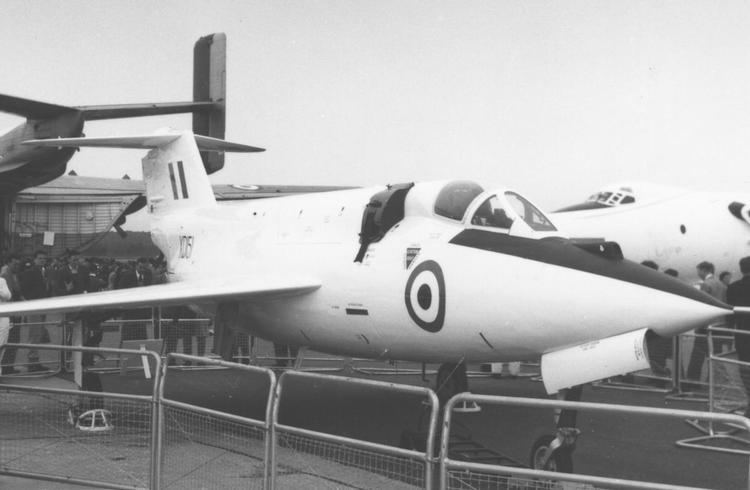Allegiance United Kingdom Service number 41658 Died 1958 | Rank Squadron Leader Name John Booth Years of service 1938-1945 Other work Chief Test Pilot | |
 | ||
Awards | ||
Battles and wars Battle of France | ||
Squadron Leader John Stanley Booth DFC* (9 December 1919 – 5 June 1958) was an English aviator, a pilot in the Royal Air Force during the Second World War, and, after the end of the conflict, became a test pilot. After spending almost ten years working for the Saunders-Roe company, he was killed in 1958 while test flying the SR.53, an experimental interceptor.
Contents
Early life
Born on 9 December 1919 near Huddersfield in Yorkshire, Booth joined the Royal Air Force in 1938 and in October 1939 he was sent to France with 59 Squadron as part of the British Expeditionary Force. During the Battle of France, he was awarded a Distinguished Flying Cross (DFC) for his gallantry. Wounded in May 1940, Booth was sent back to England for convalescence, and after recovering served a number of tours as a flying instructor. In 1943 he returned to operations with RAF Bomber Command, and was awarded a bar to his DFC.
Test Pilot
Following his service with Bomber Command, Booth started test flying at Boscombe Down in 1944 and, following his retirement from the Royal Air Force, worked for a number of companies as a test pilot, becoming deputy to the chief test pilot at Saunders-Roe in 1949. Soon afterwards he had become the company's chief test pilot, and flew the Saunders-Roe SR.A/1, the world's first jet flying boat fighter. Booth was married with two children.
On the fifth of June, 1958, Booth was killed when the experimental rocket-powered Saunders-Roe SR.53 he was test-flying suffered a failure of its rocket engine and overrun the runway at Boscombe Down. During the accident, the SR.53 hit a landing light, rupturing its fuel tanks and burst into flames, Booth being killed in the fire. A few days following the accident, Booth was posthumously awarded the Queen's Commendation for Valuable Service in the Air.
